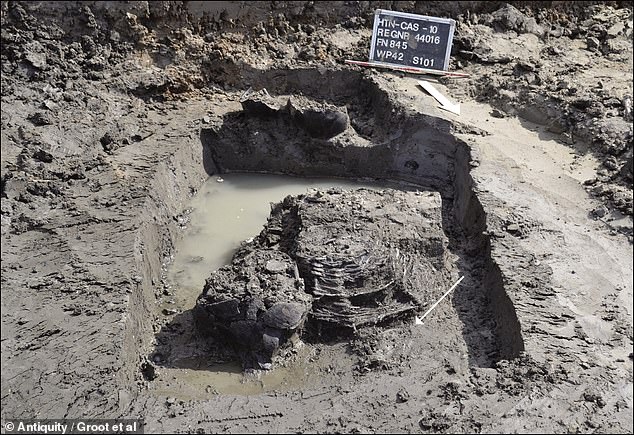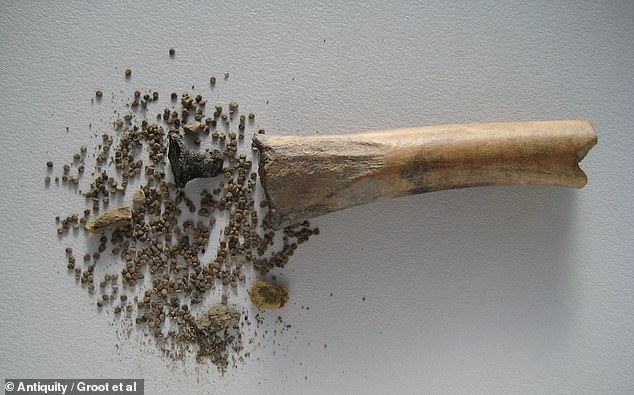- Archaeologists have discovered black henbane seeds in a hollow human bone
- These seeds have been used as medicine and narcotic.
The Romans are known to have been one of the most influential civilizations in the world.
But even they may have enjoyed a little escapism, in the form of powerful hallucinogens, a study suggests.
Archaeologists have discovered hundreds of black henbane seeds in a hollow bone at the rural Roman settlement of Houten-Castellum in the Netherlands.
These seeds come from a poisonous plant, which is part of the nightshade family, and have been used as medicine and narcotic.
So far no conclusive evidence of the use of black henbane since Roman times has been found.
Archaeologists have discovered hundreds of black henbane seeds in a hollow bone

The Romans are known to have been one of the most influential civilizations in the world. But even they may have enjoyed a little escapism, in the form of powerful hallucinogens, a study suggests.
But experts said placing seeds inside a hollowed sheep or goat bone, sealed with a plug of black birch bark tar, indicates the seeds were intentionally stored there about 2,000 years ago.
Historical texts suggest that henbane may have been used as a pain reliever and sleeping remedy.
But others warn that it can also have strong hallucinogenic effects, causing loss of muscle control, dilation of pupils, visions and even inducing a sensation of flying.
While this is the first example of black henbane found in a vessel from the Roman period, it is unclear exactly what its intended use was, the researchers said.

The remains were discovered by archaeologists at the rural Roman settlement of Houten-Castellum in the Netherlands.
Writing in the journal Antiquity, the Freie Universität Berlin team said: “Black henbane is an extremely poisonous plant species that can also be used as a medicinal or psychoactive drug.”
“There are rare cases in which intentional human use of black henbane can be proven beyond a reasonable doubt.
‘Only a few archaeological examples can be cited: one find in a tomb and three finds in hospitals.
“The discovery at Houten-Castellum in the Roman Netherlands of a bone cylinder closed at one end with a plug of birch bark tar and filled with black henbane seeds therefore constitutes an important new case for the deliberate collection and use of seeds of this plant.’


